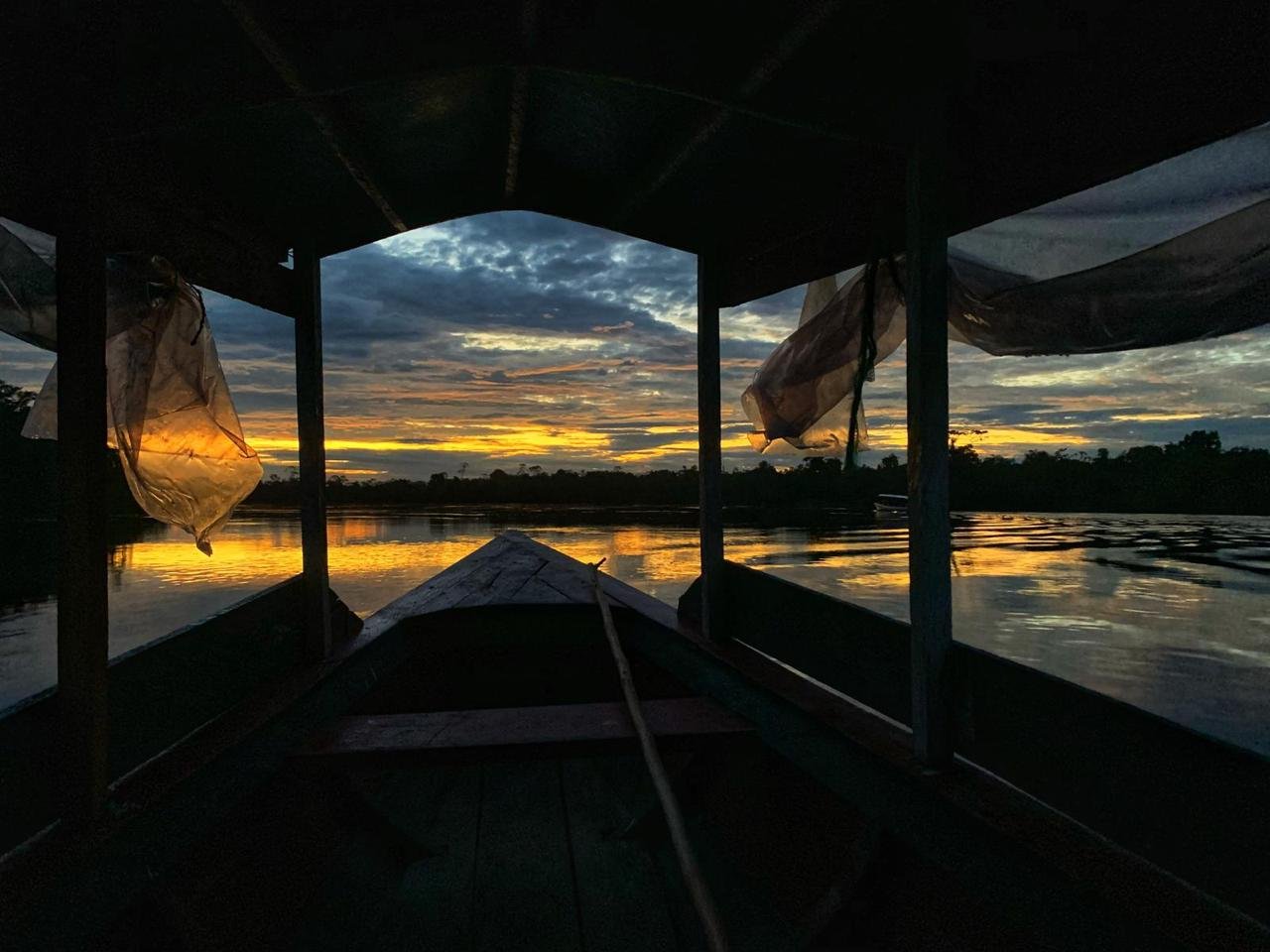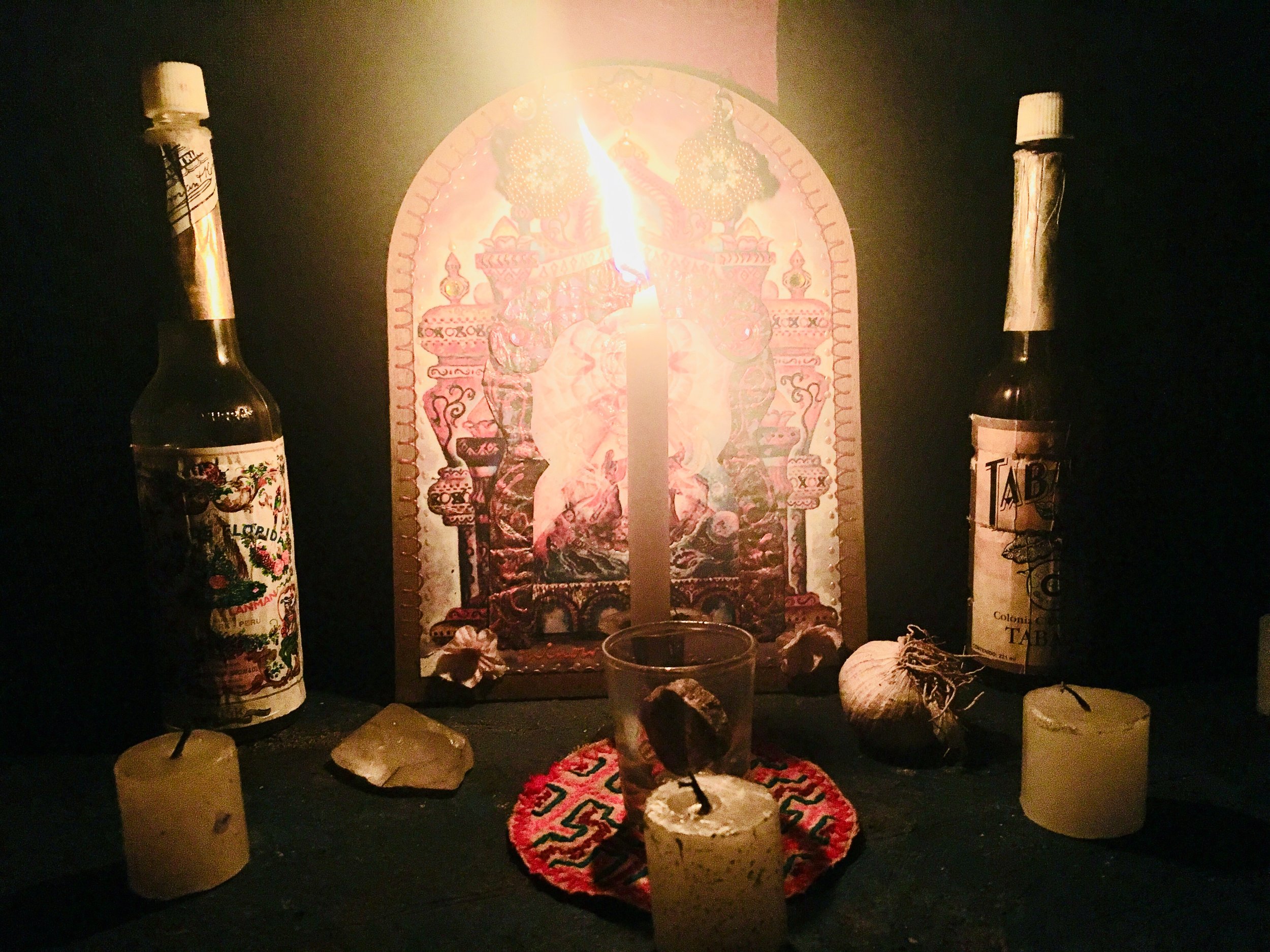What to Expect During an Ayahuasca Ceremony (and Why Integration is Essential)
While the specific details of your journey will be unique, there are general themes that show up in ceremony settings. Learn about intentionality, sacred spaces, potential effects, and the importance of integration.
In recent years, ayahuasca has garnered significant interest within the global wellness community. Ayahuasca is a plant medicine used by Indigenous cultures of the Amazon basin, including in Ecuador, Columbia, Peru, and Brazil.
Often referred to as “Mother Ayahuasca” or “teacher plant,” it’s known for inducing profound visions, healing, and connection with the spirit world.
Depending on the culture and region, ayahuasca has other names, such as hoasca, yagé, natema, and daime. This blog uses the term ayahuasca, which means “vine of the soul” in the Quechua language.
Increasingly, Westerners are traveling to South America to experience ayahuasca ceremonies, typically at retreat centers. There’s also a growing number of ceremony spaces emerging outside of South America. This interest is fueled by ayahuasca’s profound healing potential.
People engage in plant medicine work to address emotional blockages, traumas, and physical ailments; explore their spiritual selves; and connect more profoundly with the natural world.
For those considering an ayahuasca ceremony or retreat, understanding what to expect is crucial — while recognizing that each experience will be unique. To help you prepare for a potential journey, this blog post breaks down 5 key aspects of ayahuasca ceremonies.
ACKNOWLEDGEMENTS
Before we go any further, I want to acknowledge that plant medicines are not simply tools or products to be consumed. They are teachers, with a rich history woven into the traditions of Indigenous cultures. Approaching plant medicines with respect means acknowledging this legacy and listening to the wisdom passed down through generations.
For those who choose to participate in plant medicine work, it is our responsibility to 1) understand the ethical guidelines and practices associated with each medicine, 2) ensure sustainable harvesting where appropriate, and 3) foster a sense of responsibility toward the plants and the nature they grow in.
Furthermore, true healing isn’t isolated. Our wellbeing is intrinsically connected to the health of the natural world and the communities that steward these medicines. Therefore, reciprocity and right relationship are essential. This can involve 1) supporting the conservation efforts that protect these plants, 2) advocating for the rights of Indigenous cultures, and 3) contributing to organizations that promote responsible and ethical use of plant medicines.
By prioritizing relationship-building over transactional experiences, we ensure collective healing of our global community and earth.
Floating through the Amazon River in Peru. Photo taken by author Liz Zhou, who worked as a Shipibo shaman’s translator and ceremony facilitator in the Peruvian Amazon.
Now, let’s talk about what to expect during an ayahuasca ceremony.
1. Intentionality + Ceremony Space
An ayahuasca ceremony is a spiritual healing space, facilitated by a shaman or guide. Traditionally held in a sacred environment in nature, such as a maloca, the ceremony typically begins with intention-setting. This initial stage may involve prayers, tobacco (a sacred plant in many Indigenous cultures), agua florida (water used for spiritual cleansing), and icaros (traditional healing songs).
Whether you’re seeking guidance on a specific life challenge, yearning for deeper self-understanding, or curious about the spirit world, a clear intention serves as a compass throughout the experience.
Within a ceremony, each participant has their own seat or designated space. There may be multiple shamans, guides, and/or facilitators, depending on the total number of participants.
In many ayahuasca traditions, ceremonies begin after dark. There is no talking or socializing once everyone has consumed the medicine — rather, the focus is on inner exploration.
2. Drinking the Ayahuasca Medicine
The ayahuasca brew itself is typically a combination of the chacruna shrub (Psychotria viridis) and the vine Banisteriopsis caapi. The chacruna leaves contain DMT, a powerful psychedelic compound that induces altered states of consciousness. Banisteriopsis caapi acts as a MAOI (monoamine oxidase inhibitor), allowing the DMT to be orally active and enhancing the overall effects of the medicine.
The taste of ayahuasca is often described as bitter, sometimes leading to nausea. This initial discomfort is seen as a form of purification, preparing the body for the journey ahead. In some ceremony settings, the facilitators offer the brew in several rounds, allowing participants to adjust the dosage based on their individual experience.
Ceremonial altar at an ayahuasca healing center. Photo taken by author Liz Zhou.
3. Potential for Purging
Purging, which can involve yawning, spitting, vomiting, or going to the bathroom, is a common experience in ayahuasca ceremonies. While unpleasant, it’s understood as a vital part of the cleansing process — la limpieza.
With many Indigenous cultures, the belief is that purging releases emotional and physical blockages that have been accumulating in the body. After purging, participants may feel physical relief, clarity, and emotional openness.
If you experience purging, the facilitators’ job is to provide support — such as by helping you walk to the bathroom or making sure you have access to a vomit bucket. It’s not “good” or “bad” to purge — it’s simply information about the experience your body is having. Not everyone purges in the same way or during every ceremony.
4. Visions + Altered States of Consciousness
With each ayahuasca ceremony, there is potential to encounter vivid visions, introspection, and altered states of consciousness. There’s a reason this medicine is called the “vine of the soul,” after all.
The effects typically begin within 30-60 minutes of consuming the brew and can last for several hours. Exact timing varies, depending on your body, diet, relationship to the medicine, psychological state, and other factors.
The nature of these experiences ranges greatly from person to person. Some participants report encountering symbolic imagery, ancestors, spiritual entities, or the presence of Mother Ayahuasca herself.
Others experience profound emotional releases, perspective shifts, memory reprocessing, or a deep connection to the universe. It’s best to approach these experiences with an open mind and a sense of surrender, allowing the journey to unfold organically.
Views from the Amazon Jungle. Photo taken by author Liz Zhou.
5. The Importance of Integration
The ayahuasca ceremony itself is just one part of the transformative process. The real work lies in integrating the insights, emotions, and experiences encountered during the ceremony back into your daily life. This is where journaling, creative expression, and psychedelic integration therapy become crucial tools.
Journaling allows you to capture the details of your experience while they are fresh in your awareness. Writing down your visions, emotions, and physical sensations can provide valuable insights and help you track your process over time.
Creative expression through painting, drawing, or music can offer a deeper understanding of the symbolism and emotions that surfaced during the ceremony.
Psychedelic integration therapy can be invaluable in unpacking the information received during your ceremony. A psychedelic integration therapist — who has had their own experiences with ayahuasca and who approaches plant medicine work with respect and understanding — can help you apply these insights to your daily life, fostering lasting change.
If you’d like support in preparing or integrating an ayahuasca experience, let’s connect.
SCHEDULE A FREE CONSULTATION TO WORK WITH ME
{FOR COLORADO RESIDENTS}
Therapy services are available virtually, for adults located in Colorado.
RESEARCH ON AYAHUASCA
Frecska E, Bokor P, Winkelman M. The Therapeutic Potentials of Ayahuasca: Possible Effects against Various Diseases of Civilization. Front Pharmacol. 2016 Mar 2;7:35.
Uthaug MV, Mason NL, Toennes SW, Reckweg JT, de Sousa Fernandes Perna EB, Kuypers KPC, van Oorsouw K, Riba J, Ramaekers JG. A placebo-controlled study of the effects of ayahuasca, set and setting on mental health of participants in ayahuasca group retreats. Psychopharmacology (Berl). 2021 Jul;238(7):1899-1910.
Cruz L, Bienemann B, Palhano-Fontes F, Tófoli LF, Araújo DB, Mograbi DC. A quantitative textual analysis of the subjective effects of ayahuasca in naïve users with and without depression. Sci Rep. 2023 Nov 10;13(1):19635.
About the Author
I’m Liz Zhou, a holistic trauma therapist (MA, LPCC, she/her). My work integrates teachings from psychology, neurobiology, multicultural awareness, and spirituality. I provide compassionate therapy for highly sensitive people across Colorado.




